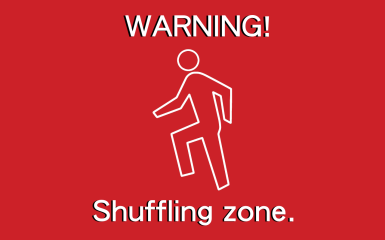The Kindness Chronicles #2
Acts of kindness bestowed upon me:
1. The numerous status updates I had on Facebook and in person wishing me a happy  birthday on 9/11.
birthday on 9/11.
2. My supervisor being incredibly understanding and helpful when I struggle with the financial aspects of my job such as purchasing, invoices, purchase requisitions, etc. (I just don’t get it!).
3. The beautiful and inspirational words of friends/colleagues who wrote letters of recommendation for me.
4. My wonderful partner bringing dinner to me and other girls at the hair salon. It was a long night! (cut, color, etc.)
5. My parents came to listen to me read to the public a short story that I wrote at the Easton Riverside Arts Festival. Talk about nervous!
Acts of kindness that I bestowed on others:
1. Bou ght my supervisor a cup of Dunkin’ Donuts coffee when the cafeteria was out of coffee at work.
ght my supervisor a cup of Dunkin’ Donuts coffee when the cafeteria was out of coffee at work.
2. Helped a woman who got lost in the hospital trying to locate the appointment desk.
3. A listening ear to my co-workers who stop by my office to “vent.” (I think I’m part counselor at this job.)
4. This isn’t one that I did, but I observed as a friend and I sat on a bench to watch the people on Main Street Downtown. It really moved me. An older man, shabbily dressed in a lightweight coat and yellow knit hat, was sitting outside in the cold night at a cafe table by himself. He was reading from a book, out loud, and following along with his finger. He struggled with the words, but he kept persevering. Two young women who were standing behind me saw him and I heard them debating back and forth. Finally, they crossed the street and bought him a cup of coffee and something to eat from the coffee shop. He was incredibly grateful. If only we all were so kind to strangers. You never know who needs a warm, welcoming hand.
**************************************************************
This is a blog movement started by Jane LaFazio and two of her friends. The purpose is to do a blog post the first Sunday of the month telling of your acts of kindness and the acts of kindness bestowed upon you.
Do you want to participate in The Kindness Chronicles with Lyric Kinard, Tracie Lynn Huskamp, Jane LaFazio, a bunch ofothers and me? Grab the logo here OR email me here and I’ll send you the jpeg and you can put it on your blog. Do a blog post the first Sunday of the month. If you do a blog post, leave a link in the comments or if you did or received a kindness, tell me about it in the comments.
Really, there are no rules~ we just want to spread kindness…
What Does Fibromyalgia Feel Like?
Sometimes it’s challenging to answer their question when asked, “How are you doing? How are you feeling?” Do they just want the generic, “I’m fine,” or the reality? It’s always a guessing game.
An hour ago, a friend and co-worker asked me this very question. She stopped in my office on her way to another appointment. Now, she truly knows I have health issues and is always concerned about how I feel. We commiserate about our common ground of severe allergies. And while she has general aches and pains from aging, etc., she never tries to make her pain seem more than mine. To her, it’s not a competition of “who hurts worse.” She genuinely cares about me and my health. It’s a rare bird in a sea of harping crows of “Me, me, me!”
It’s difficult to share with others the true state of my being. It’s not always because they don’t care, but because it involves so much! How do you explain that you were an on-the-go, active, vibrant participate in life to barely able to get out of bed in the morning seemingly overnight? My friend made a comment that made me laugh, and all of us FMers know it to be true…”Well, you look great! You don’t look sick!” While this can usually upset an FMer, knowing who it came from and the situation today, it was more amusing than hurtful. There’s a reason they call it the “invisible illness.” I told her thank you, but you would know it if you saw me walk! I look like a hunchback shuffling the two-step, as in baby steps.
So, what does Fibromyalgia feel like?
Fibromyalgia means widespread pain in the muscles, but this syndrome causes many other symptoms. Lab tests seldom validate your condition and the results often make you feel like a hypochondriac. Pressing on tender points can diagnose fibromyalgia, but the exam still does not explain all of your symptoms.
Living with fibromyalgia feels like the flu infection that doesn’t go away. It leaves me exhausted and unable to think or find the right words (symptoms of fibro fog). With fibromyalgia, I have trouble sleeping and wake up stiff and achy. My symptoms can be debilitating and I feel as though I have to push myself to get anything done.
I have crippling fatigue, even after waking up after a full night of rest. Many days, my strongest desire is to just remain in bed. Certain parts of my body are excruciatingly tender to the touch. My feet hurt and are overly sensitive no matter what type of shoes I wear. Barefoot seems to be the only option (which isn’t possible working full-time in a hospital). I have swelling in my legs and feet, and struggle with anxiety and depression.
My muscles feel like they have been overworked or pulled. They’ll feel that way even without exercise or another cause. Sometimes, my muscles twitch, burn, or have deep stabbing pain. Last night, it felt like I had a tens unit at full tilt on my legs because my muscles were twitching so bad.
Other symptoms include:
- abdominal pain
- chronic headaches
- difficulty maintaining sleep or light sleep
- dryness in mouth, nose, and eyes
- hypersensitivity to cold and/or heat
- inability to concentrate (called “fibro fog”)
- irritable bowel syndrome
- numbness or tingling in the fingers and feet
- stiffness
- Balance problems
- Itchy/burning skin
- Muscle knots, cramping, weakness
Fibromyalgia can cause signs and feelings similar to osteoarthritis, bursitis, and tendinitis. Some experts include it in this group of arthritis and related disorders. However, while the pain of bursitis or tendinitis is localized to a specific area, pain and stiffness with fibromyalgia are widespread.
How do you explain all that to someone? When someone asks me a simple, “How are you?,” the answer is never that simple.
What does your fibromyalgia feel like? What symptoms of fibromyalgia do you struggle with?
Do you have a friend or family member who understands what you’re going through? What would help encourage you?
12 Sleep Tips for Fibromyalgia Sufferers
 Many nights, I found myself tossing and turning, unable to fall into a restful sleep. I was averaging 3 to 4 hours a night. I’d stare at the ceiling, willing my body to give up, to surrender to the beckoning sand man. I read books. I took soothing hot showers. I waited until I was really tired to go to bed. I had sex. I didn’t have sex. I ate early in the night allowing myself no food close to bedtime. I took baths. I lit candles. I exercised. I even tried counting sheep, which is ridiculous, but I was desperate. Eventually, I assumed this was my “normal” and how I was meant to be.
Many nights, I found myself tossing and turning, unable to fall into a restful sleep. I was averaging 3 to 4 hours a night. I’d stare at the ceiling, willing my body to give up, to surrender to the beckoning sand man. I read books. I took soothing hot showers. I waited until I was really tired to go to bed. I had sex. I didn’t have sex. I ate early in the night allowing myself no food close to bedtime. I took baths. I lit candles. I exercised. I even tried counting sheep, which is ridiculous, but I was desperate. Eventually, I assumed this was my “normal” and how I was meant to be.
Extremely frustrating, not to mention exhausting. Most of my life I’ve struggled with sleep and it’s only gotten worse with age and the onset of fibromyalgia. Now, I can add chronic pain, sweating, muscle twitches, muscle cramps, and hands that go numb to the night-time woes. Happy, happy, joy, joy (to quote Ren and Stimpy).
A few years ago, I participated in a sleep study at the request of my doctor. I was diagnosed with insomnia (surprise, surprise) caused by my environment (anything in my environment can disrupt my sleep because I’m a light sleeper) and more recently, fibromyalgia.
What is Insomnia?
Insomnia, which is Latin for “no sleep,” is the inability to fall asleep or remain asleep. Insomnia is also used to describe the condition of waking up not feeling restored or refreshed. According to Dr. Mark Mahowald, Professor of Neurology at the University of Minnesota Medical School and Director of the Minnesota Regional Sleep Disorders Center at Hennepin County Medical Center, insomnia refers to the inability to get the amount of sleep you as an individual need to wake up feeling rested.
Insomnia is the most common sleep complaint among Americans. It can be either acute, lasting one to several nights, or chronic, even lasting months to years. When insomnia persists for longer than a month, it is considered chronic. According to the National Center for Sleep Disorders Research at the National Institutes of Health, about 30-40% of adults say they have some symptoms of insomnia within a given year, and about 10-15 percent of adults say they have chronic insomnia. People who have trouble sleeping every night without exception for months or years are fairly rare. More often, people experience chronic-intermittent insomnia, which means difficulty sleeping for a few nights, followed by a few nights of adequate sleep before the problem returns.
Sleep and Fibromyalgia
Most people with fibromyalgia complain of trouble sleeping. Sleep problems with fibromyalgia include insomnia or difficulty falling asleep as well as frequent awakening in which you become awake enough to remember them the next day. An even more common problem is awakenings that you don’t remember but that definitely interrupt your “deep” sleep. Also, other sleep disorders — such as restless legs syndrome and sleep apnea — may be associated with fibromyalgia.
People with fibromyalgia talk about waking up day after day feeling exhausted with no energy. Usually, they feel more tired in the morning, and many go back to sleep during the day to ease their fatigue. Also, it’s common for people with fibromyalgia to have great difficulty concentrating during the day, a condition called “fibro fog.” Pain or other symptoms of fibromyalgia such as depression and anxiety also contribute to sleep problems.
When asleep, healthy people pass through a cycle of progressively deeper stages of sleep, represented by fast alpha brain waves during the initial stages (indicating a half-awake state), and slow delta waves which are hallmarks of the later stages of deep sleep. But many fibromyalgia sufferers either don’t reach deep sleep, or they don’t stay there for long. Instead, alpha waves return, indicating to scientists that perhaps part of the brain is improperly active at that time. This phenomenon is known as alpha-delta sleep.
Because proper sleep can help minimize or reduce your fibromyalgia symptoms and thus improve your quality of life, it is essential to improve the quality of your sleep.
12 Sleep Tips for Fibromyalgia Sufferers
Establishing better sleep hygiene can help manage the symptoms of fibromyalgia. Improving your sleep may help decrease your pain, fatigue, and “fibro fog.” Try the following strategies and see if they help your sleep.
- Sleep only as much as needed to feel refreshed and healthy the following day, not more. Curtailing the time in bed seems to solidify sleep. Excessively long times in bed seem related to fragmented and shallow sleep.
- Keep a sleep diary. Write down how you slept each night and triggers that may have interfered with your sleep. Reviewing your notes over several weeks may give you insight into your sleep problems.
- Have a regular time to wake up each morning. A regular arousal time helps strengthen circadian cycling and leads to regular times of sleep onset.
- Use relaxation therapies. A gentle massage, deep breathing, an Epsom salt bath, gentle yoga, and other relaxation techniques are all potentially beneficial to managing fibromyalgia and boosting restful sleep.
- Exercise regularly (but avoid exercising three hours before bedtime). Exercise may exert its beneficial effect by promoting better-quality sleep.
- Sound-attenuated bedrooms may help those who must sleep close to noise. Occasional loud noises — for example, aircraft flyovers — disturb sleep even in people who are not awakened and cannot remember them in the morning.
- Avoid long daytime naps. Extensive napping can interfere with nighttime sleep.
- Keep the temperature in your room cool. An excessively warm room disturbs sleep.
- Hunger may disturb sleep; a light snack of carbohydrates may help sleep.
- Avoid caffeine or alcohol in the evening. They both disturb sleep.
- Reserve your bed for sleeping only. Avoid reading in bed, watching TV or doing work on a laptop – these activities will only aggravate your insomnia. You might also consider taking your television and computer out of your bedroom. This will help you associate your bedroom exclusively with sleeping.
- Don’t underestimate the benefits that a new mattress and pillow can offer. These items can improve your overall comfort and provide you with the proper support and therefore reduce insomnia. In addition, they can relieve some of your fibromyalgia symptoms, such as fibromyalgia pain. Is the mattress comfortable or does it hurt to lay on it? Does your pillow support your head and neck well or do you wake up with spasms and headaches? Are your sheets soft or scratchy? Also, if you’re bothered by sheet wrinkles, look for sheet straps to keep them in place better. They’re available at many bedding and houseware stores, as well as online retailers.
You may want to talk to your doctor about specific pain treatments for nighttime. A medication that makes you too tired to function during the day may be just what you need to sleep better.
Do you have trouble sleeping? What helps you sleep better? Do you have a nightly sleep routine?
Tracking Fibromyalgia Symptoms With a Symptom Journal
If you’re a fibromyalgia pro or a newbie to the world of chronic pain and illness, you’ll soon discover that you visit doctor’s offices a lot. As in, I know more about my primary care doctor’s grandchildren than I do my about my own family. When you walk into their offices, you’ll feel like it’s become your second, third, or fourth home (considering how many doctors treat you). We visit the primary care doctor (PCP), rheumatologist, neurologist, cardiologist, pain management, chiropractor, massage therapist, yoga instructor, nutritionist and any other doctor or alternative medicine approach that you think may help.
I’m fortunate in that my doctor list is quite small, but that’s mostly because I fight going to new doctors. If I don’t have to, then I don’t want to. But that’s just me being stubborn. In reality, I have to start seeing a new rheumatologist and potentially a neurologist. My PCP doesn’t feel comfortable enough with fibromyalgia to manage my treatment. She a wonderful doctor who sits with me, takes her time, and truly listens to me, but she doesn’t know enough about fibromyalgia in particular (her words-at least she is honest).
Now that I have to branch out to other doctors, again, I’m finding it hard to keep track of everywhere I’ve been, my treatments, moods, pain levels, medications, and more. Roll out the carpet for the symptom journal!
Fibromyalgia is different for everyone. This is one of the things that makes treating it so difficult. The symptoms are many and they can fluctuate like crazy — one day you feel pretty good, the next you can barely walk, the next you’re OK physically but just can’t concentrate or communicate effectively. How can you and your doctor figure out what is going on with you?
What is a symptom journal?
A symptom journal is a journal where you record your symptoms from fibromyalgia. Why symptoms? Because fibromyalgia is much more than just chronic pain. It’s important to track all the symptoms, not just the pain.
A symptom journal is like a personal diary, but you are recording your pain and symptoms on a scale from 0 – 10 when they occurred, what body part of the body did you feel pain or your increased pain, the activity your were doing at the time, what you did to relieve your pain or symptoms by taking medications or other therapies, and then rating your symptoms in another hour to see if the they were relieved by your medication or therapy.
By keeping daily track of how you felt and what you did, you may be able to find patterns or identify triggers. Maybe you’re most tired the day after you go to the grocery store, or perhaps your flare-ups regularly start 14 days into your menstrual cycle. A journal can help you and your doctor spot these kinds of things when you might otherwise miss them.
Keeping a symptom journal.
The most important thing to keep in mind when starting a symptom journal is to keep it simple. If it only takes a few minutes to fill out you’re more likely to stick with it when you’re feeling your worst. Also, while a ton of different forms and styles are out there, you should tailor the records to your own situation and keep the information relevant to you.
Right now, I have a basic one subject notebook, and each day, I record what medications I take, food I ate and what time I ate it, rate my pain and fatigue on a scale of 0-10 (with 10 being the worst), time I wake up and go to bed, activities, weather, and mood. I also use the same notebook to take notes and remember questions at doctor’s appointments.
Guess what? I’m designing a fibromyalgia symptom journal!
It’s a work-in-progress right now, but when it’s finished, it will be posted here for your use! But it means that I need your help.
What do you think is important for a fibromyalgia symptom journal? What should we record in our symptom journal?
What do you think it should look like?
How big would you want it to be? Pocket size? Notebook size? Or something different?
If you have a symptom journal, what type of journal do you use? What’s your system?
I’d love to know!













